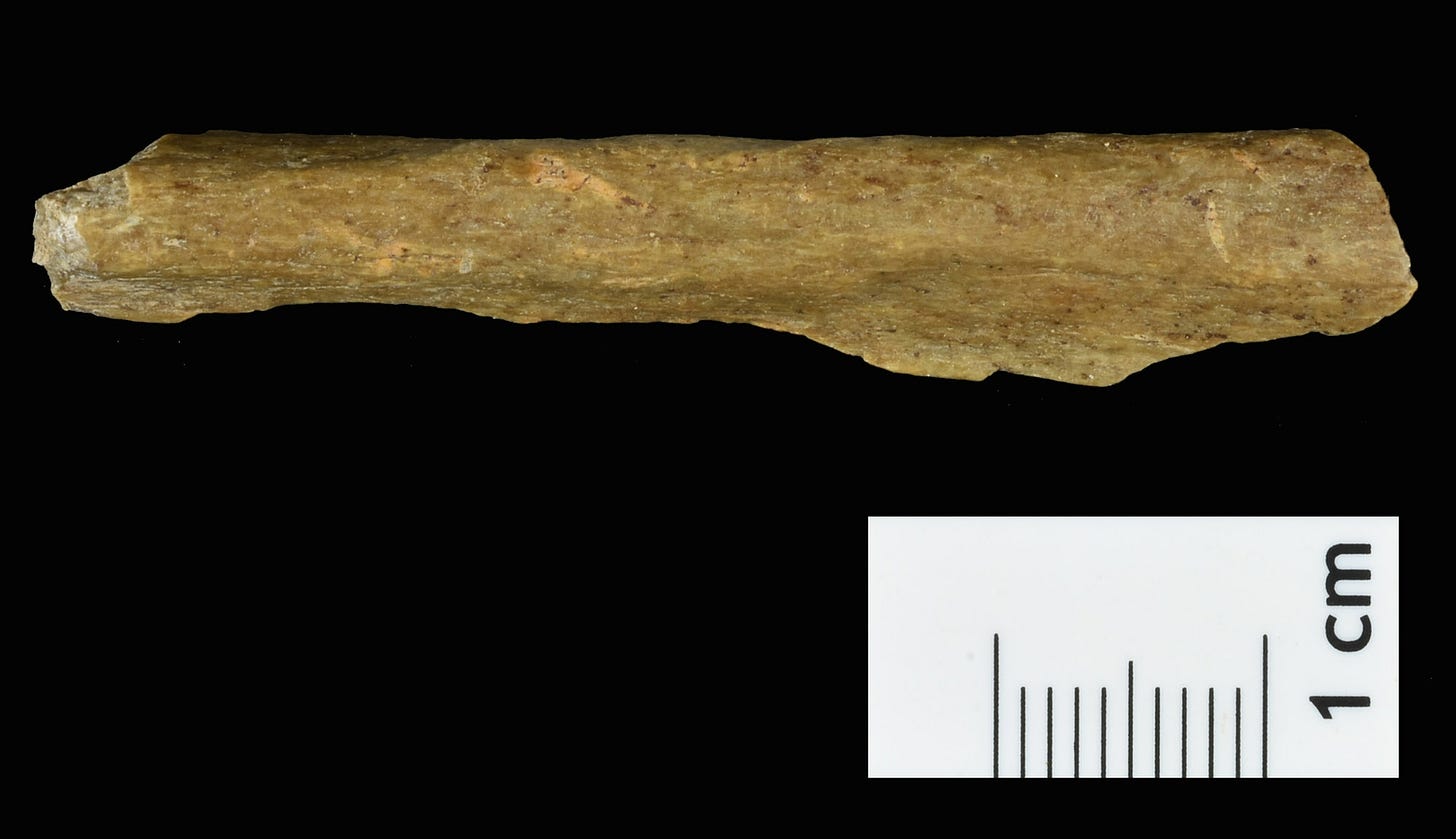Modern Humans and Neanderthals Coexisted in Northern Europe 45,000 Years Ago
Homo sapiens and Neanderthals' Shared Tale
Revealing Our Ancestral Overlap
Genetic analysis of bone fragments from a German site challenges the narrative of Homo sapiens' late arrival in Northern Europe. There papers in Nature Ecology and Evolution1 2 3summarize findings at the Ranis site and showcase a Stone Age culture that predates previous estimates, shedding light on the coexistence of modern humans and Neanderthals.

Ancient Tools, New Discoveries
Stone blades, known as leaf points, from the Lincombian–Ranisian–Jerzmanowician culture, once attributed to Neanderthals, are now confirmed as Homo sapiens' craftsmanship. This challenges prior assumptions about the range and capabilities of early Homo sapiens, pushing back their presence in Europe.
Genetic Insights: Maternal Relatives Linking Past and Present
Mitochondrial DNA analysis, conducted meticulously on hominid bone fragments, connects ancient individuals from the Ranis site to modern counterparts. Shared mitochondrial DNA sequences suggest familial relations among the individuals, providing a glimpse into the intricate social dynamics of early Homo sapiens.
Resilience in Adversity
The Ranis site's environmental clues, including traces of reindeer, cave bear, and woolly rhinoceros bones, reveal challenging climatic conditions. This challenges previous notions, showing that early Homo sapiens demonstrated remarkable adaptability to harsh environments, contrary to earlier assumptions.
Rewriting History: A Shift in Chronology
Radiocarbon dating of bones unveils sporadic human occupation as early as 47,500 years ago, revolutionizing our understanding of settlement patterns in Europe. Ranis, once seen as a Neanderthal site, emerges as a critical piece in the puzzle of human evolution.
Impact on Anthropology and Archaeology
The findings at Ranis prompt a reevaluation of settlement histories, technological capabilities, and social dynamics of early c. This discovery opens new avenues for understanding the complexities of human migration and interaction in prehistoric Europe.
Intrigued anthropologists, archaeologists, and geneticists now have a richer tapestry of human history to explore, where Neanderthals and Homo sapiens shared a chapter in our ancient saga.
Mylopotamitaki, D., Weiss, M., Fewlass, H., Zavala, E. I., Rougier, H., Sümer, A. P., Hajdinjak, M., Smith, G. M., Ruebens, K., Sinet-Mathiot, V., Pederzani, S., Essel, E., Harking, F. S., Xia, H., Hansen, J., Kirchner, A., Lauer, T., Stahlschmidt, M., Hein, M., … Hublin, J.-J. (2024). Homo sapiens reached the higher latitudes of Europe by 45,000 years ago. Nature, 1–6. https://doi.org/10.1038/s41586-023-06923-7
Smith, G. M., Ruebens, K., Zavala, E. I., Sinet-Mathiot, V., Fewlass, H., Pederzani, S., Jaouen, K., Mylopotamitaki, D., Britton, K., Rougier, H., Stahlschmidt, M., Meyer, M., Meller, H., Dietl, H., Orschiedt, J., Krause, J., Schüler, T., McPherron, S. P., Weiss, M., … Welker, F. (2024). The ecology, subsistence and diet of ~45,000-year-old Homo sapiens at Ilsenhöhle in Ranis, Germany. Nature Ecology & Evolution, 1–14. https://doi.org/10.1038/s41559-023-02303-6
Pederzani, S., Britton, K., Trost, M., Fewlass, H., Bourgon, N., McCormack, J., Jaouen, K., Dietl, H., Döhle, H.-J., Kirchner, A., Lauer, T., Le Corre, M., McPherron, S. P., Meller, H., Mylopotamitaki, D., Orschiedt, J., Rougier, H., Ruebens, K., Schüler, T., … Hublin, J.-J. (2024). Stable isotopes show Homo sapiens dispersed into cold steppes ~45,000 years ago at Ilsenhöhle in Ranis, Germany. Nature Ecology & Evolution, 1–11. https://doi.org/10.1038/s41559-023-02318-z

